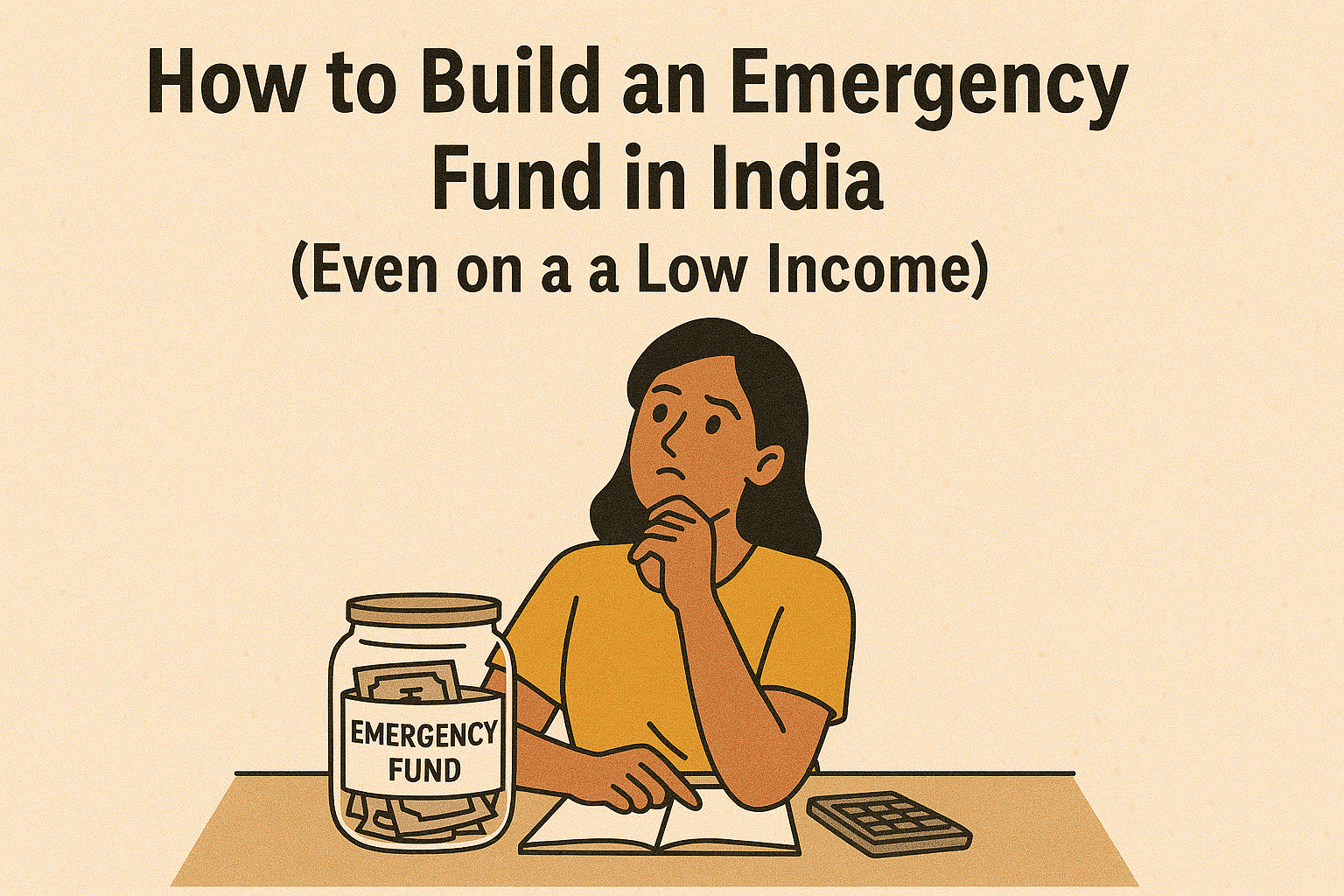If you’ve been wondering how to build an emergency fund in India, especially when your income is low, you’re not alone. Many Indians struggle to save money, but having a solid emergency fund is one of the smartest financial moves you can make.
Knowing how to build an emergency fund in India is one of the most powerful financial habits anyone can develop. It provides a financial cushion that protects you from unexpected expenses and prevents debt.
Life loves surprises. But let’s be honest — not all surprises are cute. Some are expensive. Like your phone falling face-first, or your bike deciding to retire without notice, or sudden medical expenses popping up like unwanted guests.
And that’s why, my friend, we need an emergency fund. Especially in India, where one hospital visit or a job loss can shake your budget to the core.
If you’re living paycheck to paycheck and wondering, “How can I save anything with this salary?”, don’t worry. This guide will show you how to build an emergency fund in India — even if your income is tight.
🚨 What Is an Emergency Fund?
An emergency fund is like your financial airbag. It’s a stash of money set aside specifically for unexpected expenses — medical emergencies, job loss, urgent travel, or major repairs.
It’s not for your next iPhone or that Zomato binge. It’s your safety net.
“An emergency fund won’t make you rich overnight, but it will stop one bad month from destroying years of effort.”

🧠 Why You Must Know How to Build an Emergency Fund in India
Here’s the deal:
- In India, insurance coverage isn’t universal.
- Most people have zero savings for real emergencies.
- One crisis can push families into debt traps.
If you’re building wealth, you must also build a foundation to protect it. And that starts with an emergency fund.
TL;DR: No fund = future financial mess.
Read more on why emergency funds matter — Investopedia
🧮 How Much Should Be in Your Emergency Fund?
A good rule of thumb? Save at least 3 to 6 months of your essential expenses.
So, how do you calculate it?
- List your monthly “must-haves” (rent, food, bills, EMI, transport).
- Multiply that by 3 or 6 depending on how secure your job is.
Let’s say your essential monthly expense is ₹20,000. Your target should be ₹60,000 to ₹1,20,000.
This is another reason why knowing how to build an emergency fund in India is so important — you know your target and can plan smartly.
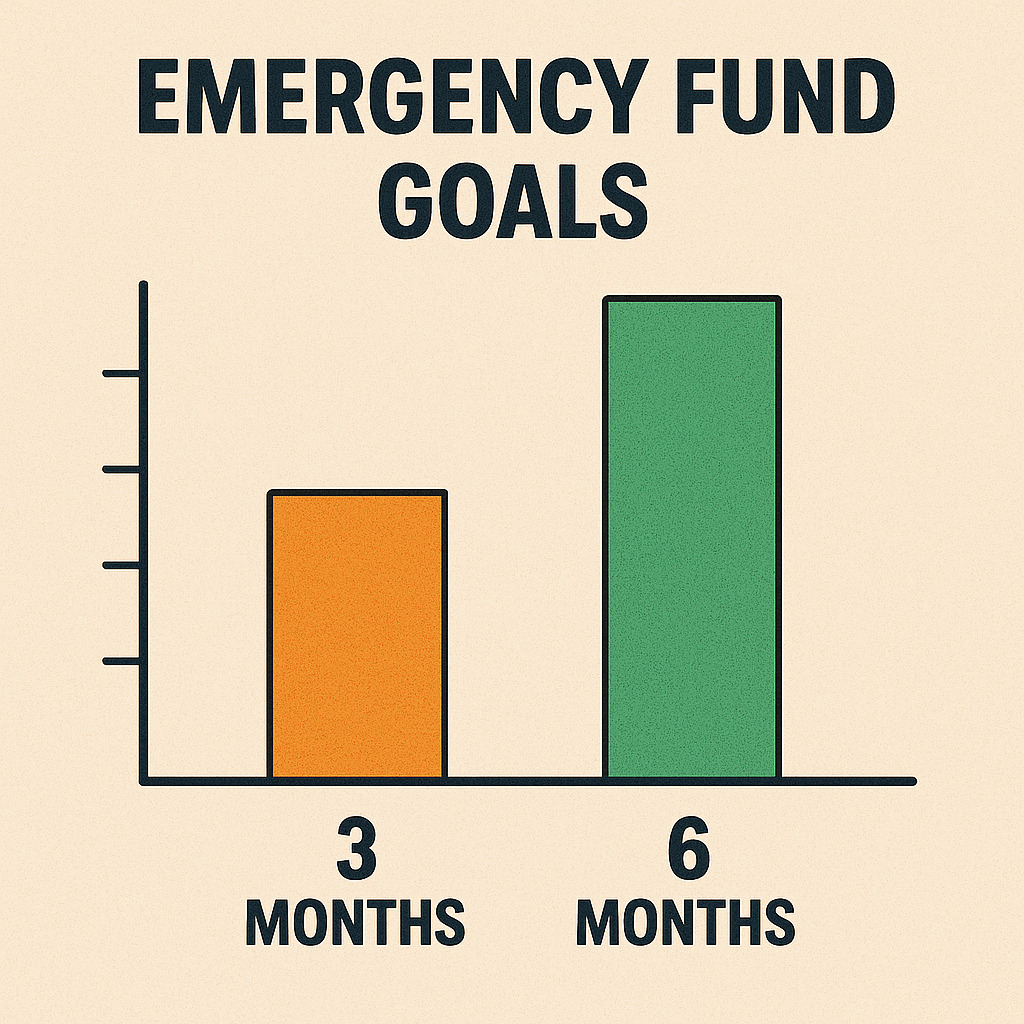
💡 Step-by-Step: How to Build an Emergency Fund in India (Even on a Low Income)
Let’s get into the actual steps of how to build an emergency fund in India, especially when money is tight.
1. Start with a Micro Goal
Don’t chase ₹1 lakh right away. Start with a tiny goal. Like ₹5,000.
Once you hit ₹5K, go for ₹10K. The small wins keep you motivated.
“Big goals feel scary. Tiny goals feel doable.”
2. Open a Separate Bank Account
This is crucial. Keep your emergency fund in a different account — preferably a high-interest savings account or a liquid mutual fund.
This way, you won’t accidentally spend it during the next Myntra sale.
Read More About Best Savings Accounts for Beginners in India — The 500 Investor
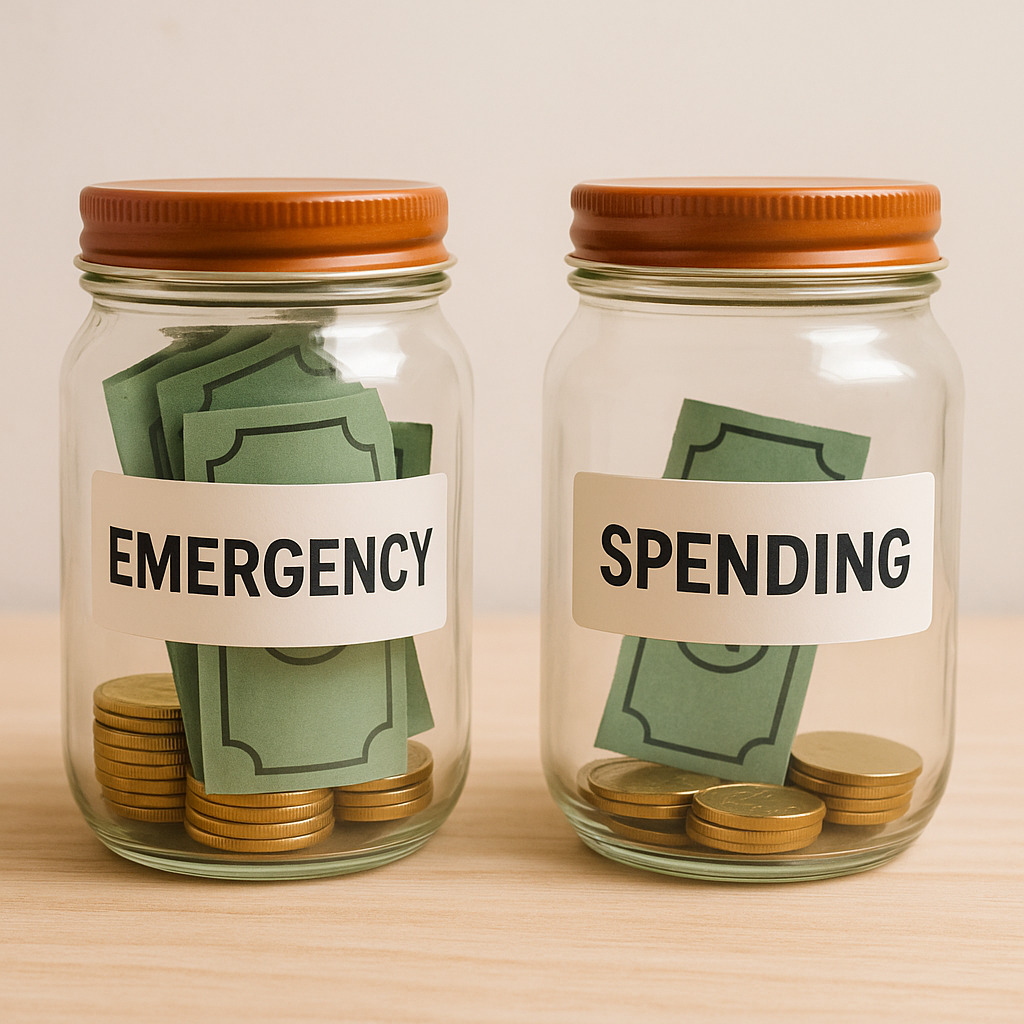
3. Automate Your Savings
Set up an auto-transfer every month (even ₹500 works). Treat your emergency fund like a non-negotiable bill.
“You pay your landlord every month. Why not pay your future too?”
4. Cut & Redirect
Spot one small thing you can skip — one weekly pizza, one movie outing, one Swiggy order — and redirect that money to your emergency fund.
Use apps or Excel to track where your rupees are escaping.
5. Use Windfalls Smartly
Got a bonus? Freelance gig? Tax refund? Instead of spending all of it, send 50% straight to your emergency fund.
This step-by-step method makes how to build an emergency fund in India easy, no matter your income level.
💰 Where to Keep Your Emergency Fund in India
Not under your mattress, please. You need safety + easy access + some interest.
Here are smart options:
- High-Interest Savings Account – Easy and safe.
- Liquid Mutual Fund – Slightly better returns, still accessible.
- Recurring Deposit (RD) – Good for disciplined monthly savings.
Learn More About SIP vs FD vs RD — The 500 Investor
Avoid stock market or risky investments — emergency fund = zero risk.
Learn more about liquid funds for emergency saving — Groww India
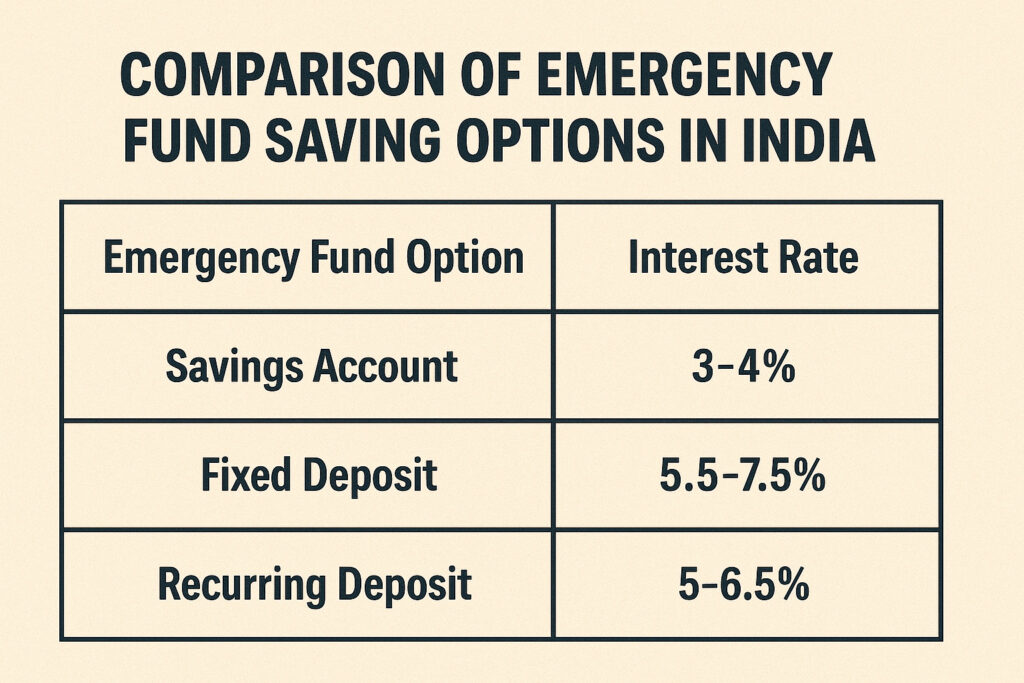
🚫 What Not to Do with Your Emergency Fund
- Don’t invest it in stocks or crypto
- Don’t mix it with your vacation fund
- Don’t dip into it for regular expenses
This fund is sacred. Touch it only when the roof is metaphorically (or literally) on fire.
Another important tip in understanding how to build an emergency fund in India — is learning when not to touch it.
🔁 Review and Refill Regularly
Once you hit your goal, don’t stop. Life changes. Salaries go up. So do expenses.
Review your emergency fund every 6 months. Tweak if needed. If you use it, refill it ASAP.
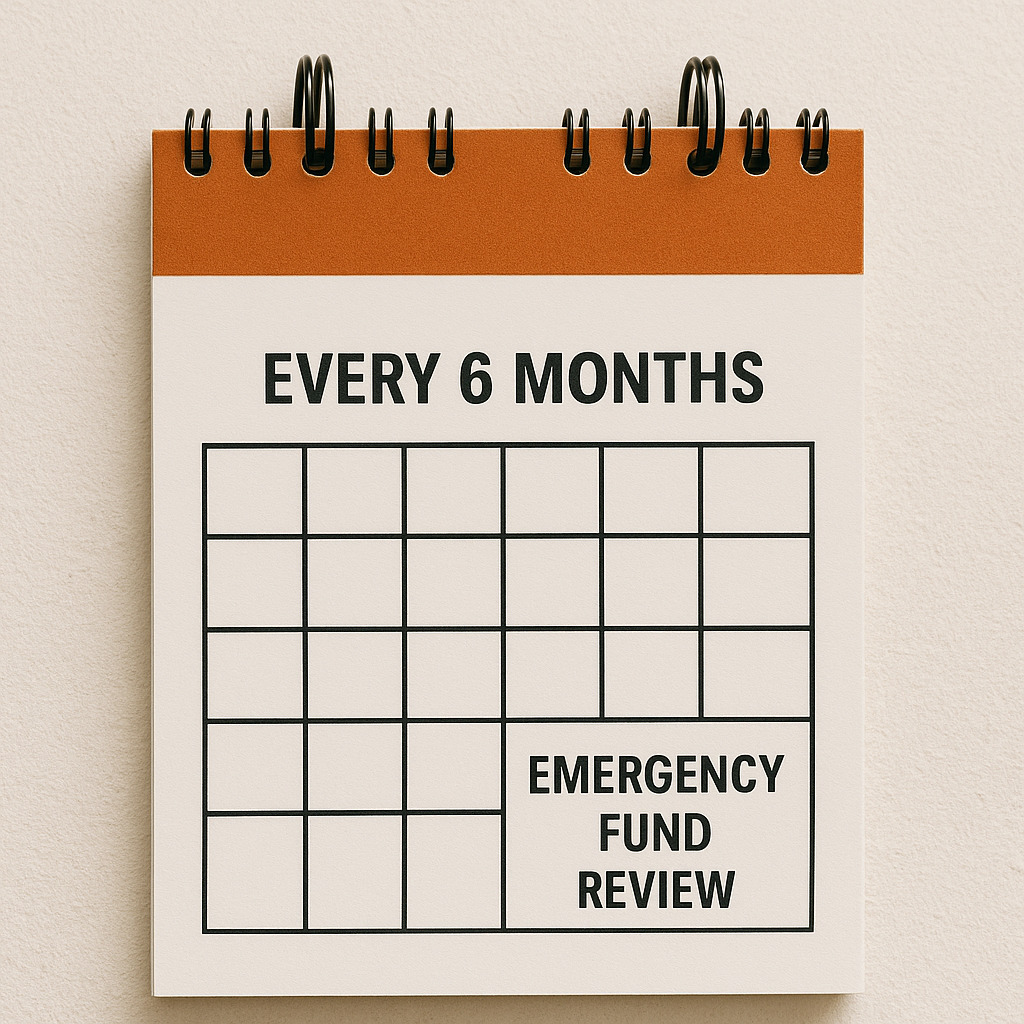
🎯 Final Words: You CAN Build One — Even with a Small Income
You don’t need lakhs to get started. You just need a plan and consistency.
If you’re reading this, you’re already one step ahead of most. You now know how to build an emergency fund in India, even if money is tight.
Start with ₹100, build momentum, and protect your future.
“Emergency fund = Financial peace of mind. You owe that to yourself.”
✅ Quick Recap: How to Build an Emergency Fund in India
| Step | Action |
|---|---|
| 1 | Set a mini goal (₹5K, ₹10K) |
| 2 | Open a separate savings account |
| 3 | Automate your savings (even ₹500/month) |
| 4 | Cut one non-essential expense and redirect |
| 5 | Use bonuses & windfalls smartly |
| 6 | Keep it safe — not in risky assets |
| 7 | Review every 6 months |
📌 FAQs on How to Build an Emergency Fund in India
Q: How much money should I have in an emergency fund in India?
A: At least 3–6 months of your essential expenses.
Q: Where should I keep my emergency fund in India?
A: In a high-interest savings account or liquid mutual fund. It should be safe and accessible.
Read More About Best Savings Accounts for Beginners in India — The 500 Investor
Q: Can I start an emergency fund with ₹500?
A: Absolutely! Start small, be consistent, and build from there.
Q: Should I invest my emergency fund in stocks or crypto?
A: No. Emergency funds should be risk-free and instantly accessible.
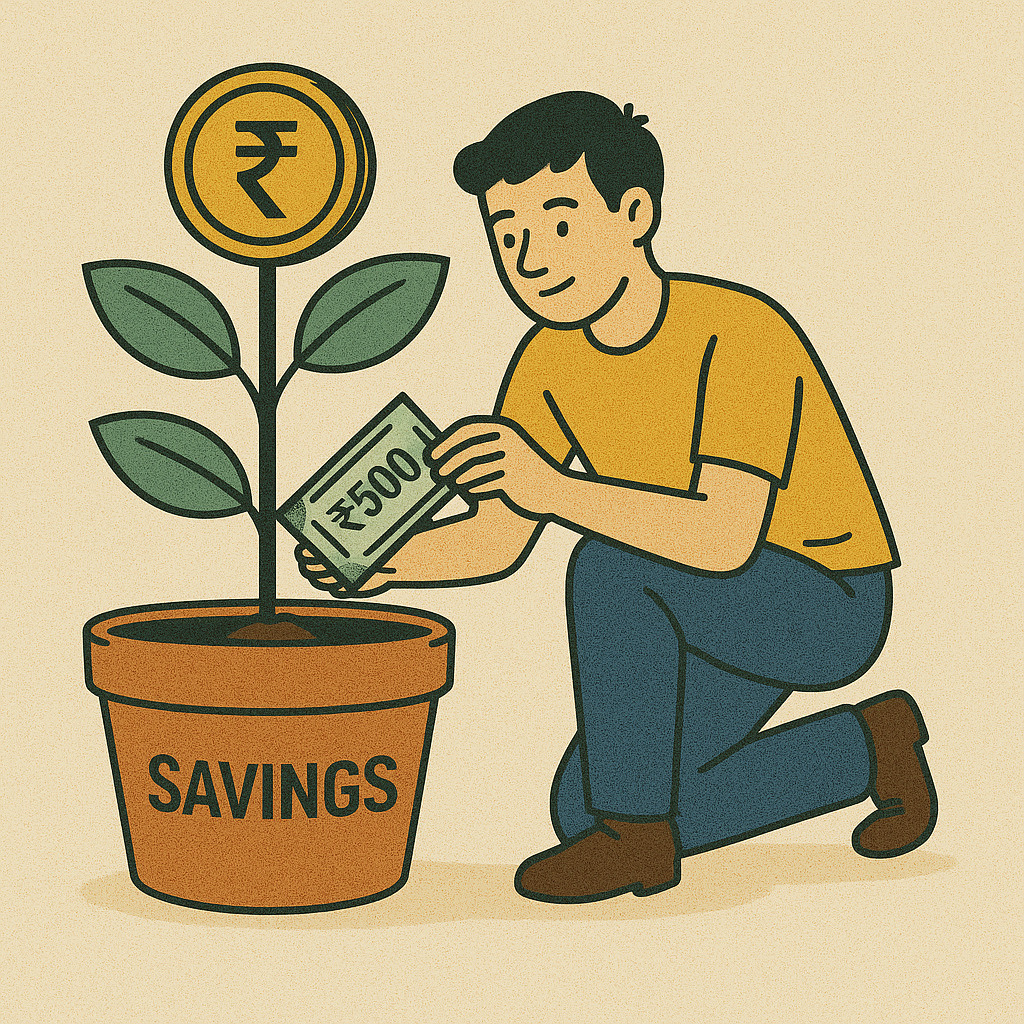
Ready to build yours? Your future self will thank you.
Knowing how to build an emergency fund in India is a money move your future self will never regret.
📥 Want help getting started? Download our free Budgeting + SIP Tracker Toolkit by joining my newsletter; You’ll get the toolkit in Welcome mail(Check the Promotions section) — perfect for beginners like you!
Let’s build your financial safety net one smart rupee at a time.

